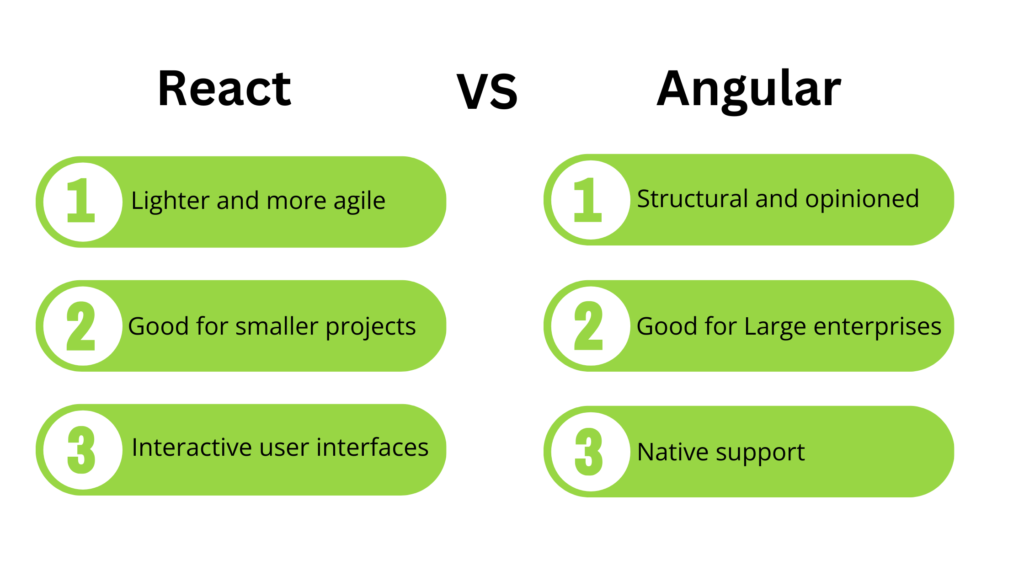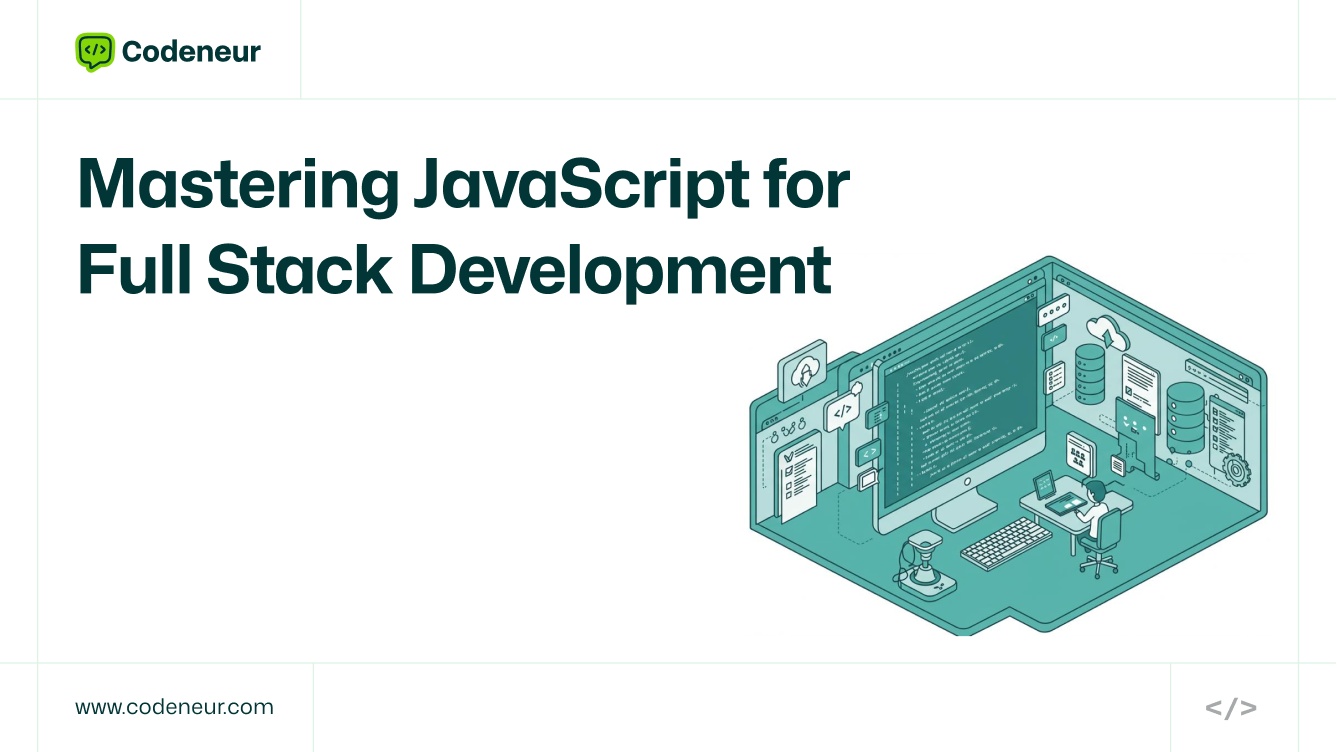Mastering Javascript is crucial for full-stack development. An awesome full-stack developer who is good at Javascript develops everything that will define the frontend interfaces and backend functionalities of web applications.
In the world of web development, JavaScript stands as a backbone and it is the only language that runs web development. It allows users to have interactive experiences in their browsers.
A full-stack developer should have a complete view of the application’s workflow, from all visual elements that the user interacts with to the server-side logic powering it.
However, JavaScript works on both the front by Adding usability features that make the UI more dynamic and responsive and the back end as Frameworks like Node.js support the production of efficient server-side applications.
Whether you are a fresher or honing your skills, read further, and this guide will energize you to develop high-performance applications and master javascript full-stack development. Being innovative with JavaScript is the secret to survival in the tech industry. Start that transformation today!
Understanding Full Stack Development
Full-stack development means the ability to work both ways on an application. Users interact with these, including everything they see and experience on their browsers.
The backend consists of the server, database, and application logic that the users do not see but is crucial for making it work.
In full stack development, it is necessary to have a good knowledge of many technologies and frameworks. JavaScript fills the gap for easier troubleshooting and performance optimization of issues because it connects the front-end and back-end technologies.
On the frontend, the JavaScript frameworks React and Angular empower developers to create rich user interfaces. On the backend, Node.js and Express.js enable server-side development, which allows for request management, database implementation, and business logic application.
You’ll thus ensure consistent development experience and achieve the full potential of the advantages a single unified language can bring.
The Role of JavaScript in Full Stack Development
JavaScript has gained speed since its invention. It gradually began with only client-side scripting tools to deeper, versatile integration in full stack development. Adoption by the industry has grown significantly with frameworks such as Node.js allowing JavaScript to run on the server side.
JavaScript provides developers a way to craft front-end interactive applications using libraries like React and Angular with the server-side logic done using Node.js and Express.js.
So, with this capability, JavaScript has turned into a versatile tool for the creation of full stack applications. Developers can swiftly shift between client-side and server-side work.
All frameworks, for instance, can utilize the tools for building complex interfaces in the process of front-end development.
With React, you can easily make the development process uncomplicated by using component-based architecture, but with Angular, it is done much easier through two-way data binding.
In Node.js, there’s non-blocking I/O, and then there is an event-driven architecture, followed by Express.js which makes a procedure more streamlined by making it easier for one to create a server and routes.
Besides productivity increase, JavaScript makes applications of better quality. A knowledgeable developer in JavaScript can easily transition and take up newer frameworks and libraries, hence never behind the times within such a fast-moving tech landscape.
Frontend Development with JavaScript
Introduction to frontend frameworks: React and Angular
Front-end frameworks offer a skeleton or a package of tools to simplify the complexity of constructing complex web applications. Two of these are most prevalent: React and Angular.
React
A JavaScript library to create user interfaces. Its architecture follows the principle of component-based architecture. The UI is divided into a group of smaller, reusable components. This helps in dealing with very large-scale applications.
- JSX: React allows the use of JavaScript syntax extension for JSX which writes HTML-like structures within its JavaScript code. It is more intuitive and easy to read.
- State Management: The state is what the React component uses to decide and render the component based on the data that triggers it. Changes in state cause re-renders that keep the UI fresh.
Angular
It is a full-featured framework that provides a rich set of tools for developing web applications. Angular uses a two-way binding approach, whereby changes to the model are reflected instantly in the view and vice versa.
- Dependency Injection: Dependency injection is used by Angular for the management of the lifecycle of components and services. The dependency will support some level of code testing and even maintenance.
- Structure: Angular, just like React, is a component-based architecture, but more opinionated than React with the modules, services, and directives in full view.
Comparing React and Angular: when to use which.

Best Practices in Frontend Development with JavaScript
JavaScript for Backend Development
Backend Technologies
The backend of a web application refers to the server side of the logic, as well as data storage and retrieval. This is possible through the use of technologies like Node.js and Express.js with which you can create backend applications using JavaScript.
- Node.js
Node.js is a JavaScript runtime environment that lets the user run JavaScript code outside a web browser. It is based on Chrome’s V8 JavaScript engine and uses a non-blocking I/O and event-driven architecture that makes it efficient to handle many concurrent requests without blocking the main thread.
- Express.js
Express.js is a very popular web framework, founded on top of Node.js. It gives you an easy way to build basic web servers, as well as deal with HTTP requests and responses, and at least handle some routing. This framework also supports middleware capabilities to add custom functionality to your application.
Simple Server with Node.js and Express.js Setup
Below is an example of basic Node.js server code using Express.js.
This code creates a minimalist server listening on port 3000 that handles GET requests to the root URL by responding “Hello, world!”.
JavaScript Best Practices for Backend Development
Integrating Frontend and backend
The frontend and backend parts of a web application will work effectively only when they interact with each other. In most cases, this interaction of the frontend with the backend is carried out using HTTP requests and API calls.
RESTful APIs
RESTful APIs are Representational State Transfer APIs and are seen as the structured mode of interaction between different software components. They use HTTP methods such as GET, POST, PUT, PATCH, DELETE to perform operations regarding the resources.
By determining well-structured RESTful APIs, you will clearly and efficiently define the interface between the frontend and the backend. From the frontend, to send requests to the backend for fetching data and creating or updating a resource among other things.
Example. React and Node.js/Express.js
Assume a simple application to hold a list of blog posts
- The frontend part is based on React.
- A lot of blog posts should be presented to the user.
- You must allow users to create, edit, and delete posts.
- Send the required HTTP requests on the backend to fetch, create, update, and delete posts.
Backend (Node.js/Express.js)
Manages database activities which include storing and retrieving posts from the blog
Restful endpoints for the front end to invoke.
- /posts GET: Gets all the posts
- /posts/{id} GET: Get a specific post
- /posts POST: Creates a new post
- /posts/{id} PUT: Update the post
- /posts/{id} DELETE: Delete the post
A way to do HTTP requests in the frontend using JavaScript’s fetch API or a library like Axios can be used. Then this is processed at the back-end and allowed to communicate with the database for the appropriate responses.
Thus, frontend and backend integration done effectively would produce a smooth and responsive application.
JavaScript for Full Stack Development- Common Challenges and Solutions
A balance between the front and backend developments: It may be tough to balance the complexities between the front and backend developments.
- Optimize performance: You would be concerned with the applications being able to hold pressure, especially when you have many loads.
- Security: The priority is that an application should be XSS-free, SQL injection-free, and CSRF attack-free.
Solutions and Resources
- Expertise: You can opt to go for front-end development or back-end development to learn more.
- Online courses and tutorials: You can become a full stack JavaScript master by going through some online courses
- Open source projects: Join a community on open source projects and learn from the best, besides sharpening your skills.
- Coding communities: Seek help from such online coding communities; as Stack Overflow and even Reddit.
- Keep updated: Subscribe to blogs, newsletters, or podcasts on the latest trends or best practices.
Why Continuous Learning?
Web development is in constant flux due to the newer technologies along with their changed frameworks continuing to emerge in the market each day. Consequently, a full stack JavaScript developer has to learn and change them throughout his or her life. For that reason, update to improve the skill level, remain competitive, and then develop innovative, high-performance applications with power.
Conclusion
To conclude master the art of JavaScript on the path to becoming a good full-stack developer. With its highly powerful capability in powering both front and backend development, JavaScript is apt for creating dynamic and interactive applications.
As you practice all of the various frameworks and libraries you encounter, you will master JavaScript and this is reached only with continuous learning combined with hands-on experience.
Let’s start and begin your journey to Master Full stack JavaScript together with Codeneur.

